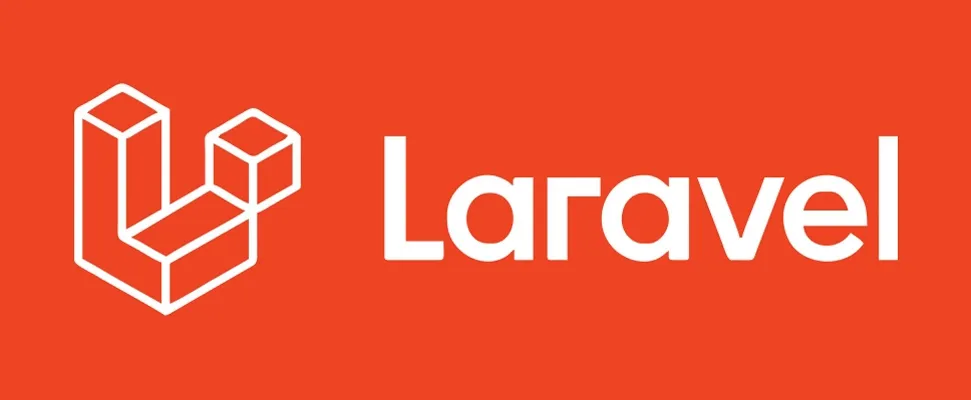Implementing Authorization using Gates and Policies in Laravel?
Jul 08, 2025 am 01:33 AMLaravel handles authorization through Gates and Policies. 1. Gates are closures for simple, model-agnostic actions like accessing a dashboard or admin tasks. 2. Policies are model-specific classes organizing access rules for actions like view, update, or delete. 3. You can combine gates and policies for complex logic, choosing clarity and testability. 4. Use middleware for route-level checks to protect routes via the can middleware. 5. Avoid hardcoded roles by centralizing logic in gates or policies. 6. Test authorization thoroughly with unit tests for each gate and policy method. 7. Use the before method or gates when authorizing actions without a model instance. This structured approach ensures maintainability and scalability as your application grows.

Laravel provides a robust and flexible way to handle authorization through Gates and Policies. These two features allow you to define complex access control logic in a clean and maintainable way, especially as your application grows.

Let’s dive into how you can implement them effectively.

What Are Gates and When to Use Them
Gates are essentially closures that determine whether a user is authorized to perform a specific action. They’re best used for actions that aren’t tied directly to a model or when the logic is simple enough not to need a full policy.
For example:

Gate::define('update-settings', function ($user) {
return $user->isAdmin();
});You can then check this gate anywhere using:
if (Gate::allows('update-settings')) {
// Proceed with the action
}Use gates for general permissions like:
- Accessing a dashboard
- Exporting data
- Performing admin-only tasks
They're great for small logic bits and don’t require tying to a specific Eloquent model.
Understanding Policies – For Model-Based Authorization
Policies are classes dedicated to handling authorization logic for a particular model. If your app has models like Post, Comment, or User, policies help organize rules around creating, viewing, updating, or deleting those models.
To create a policy:
php artisan make:policy PostPolicy --model=Post
Then register it in AuthServiceProvider:
protected $policies = [
Post::class => PostPolicy::class,
];Inside your policy class, Laravel generates placeholder methods like view, create, update, etc. You can customize these based on your needs.
Example:
public function update(User $user, Post $post)
{
return $user->id === $post->user_id;
}Now, checking becomes straightforward:
if ($user->can('update', $post)) {
// Allow editing
}This keeps all your model-related access logic centralized and readable.
Combining Gates and Policies for Complex Logic
Sometimes, you might want to combine both approaches. For instance, you may have a gate that checks a global permission but falls back to a policy if needed.
Here's an example where a user can view a post only if they either own it or have a special role:
In your PostPolicy:
public function view(User $user, Post $post)
{
return $user->id === $post->user_id || $user->hasRole('editor');
}Or if you prefer to centralize some logic in a gate:
Gate::define('view-post', function ($user, $post) {
return $user->owns($post) || $user->isEditor();
});Choose whichever makes your code cleaner and easier to test. Mixing both isn't a problem as long as it doesn't become confusing.
Tips for Managing Authorization Smoothly
Use middleware for route-level checks
Laravel lets you protect routes using thecanmiddleware:Route::put('/post/{post}', [PostController::class, 'update'])->middleware('can:update,post');Don’t hardcode roles everywhere
Instead of scatteredif ($user->role === 'admin'), move such logic into gates or policies. This makes future changes easier.Test your authorization logic thoroughly
Write unit tests for each gate and policy method to ensure your access control behaves as expected under different scenarios.Remember, policies work with model instances
If you're authorizing actions without a model instance (like creating one), usebeforemethod in the policy or fallback to gates.
Authorization in Laravel using Gates and Policies gives you fine-grained control while keeping your codebase organized. Whether you're managing a few permissions or dozens, structuring them properly from the start will save you time down the line.
That's basically it — not too complicated, but powerful once set up right.
The above is the detailed content of Implementing Authorization using Gates and Policies in Laravel?. For more information, please follow other related articles on the PHP Chinese website!

Hot AI Tools

Undress AI Tool
Undress images for free

Undresser.AI Undress
AI-powered app for creating realistic nude photos

AI Clothes Remover
Online AI tool for removing clothes from photos.

Clothoff.io
AI clothes remover

Video Face Swap
Swap faces in any video effortlessly with our completely free AI face swap tool!

Hot Article

Hot Tools

Notepad++7.3.1
Easy-to-use and free code editor

SublimeText3 Chinese version
Chinese version, very easy to use

Zend Studio 13.0.1
Powerful PHP integrated development environment

Dreamweaver CS6
Visual web development tools

SublimeText3 Mac version
God-level code editing software (SublimeText3)

Hot Topics
 What are policies in Laravel, and how are they used?
Jun 21, 2025 am 12:21 AM
What are policies in Laravel, and how are they used?
Jun 21, 2025 am 12:21 AM
InLaravel,policiesorganizeauthorizationlogicformodelactions.1.Policiesareclasseswithmethodslikeview,create,update,anddeletethatreturntrueorfalsebasedonuserpermissions.2.Toregisterapolicy,mapthemodeltoitspolicyinthe$policiesarrayofAuthServiceProvider.
 How do I install Laravel on my operating system (Windows, macOS, Linux)?
Jun 19, 2025 am 12:31 AM
How do I install Laravel on my operating system (Windows, macOS, Linux)?
Jun 19, 2025 am 12:31 AM
Yes,youcaninstallLaravelonanyoperatingsystembyfollowingthesesteps:1.InstallPHPandrequiredextensionslikembstring,openssl,andxmlusingtoolslikeXAMPPonWindows,HomebrewonmacOS,oraptonLinux;2.InstallComposer,usinganinstalleronWindowsorterminalcommandsonmac
 What are controllers in Laravel, and what is their purpose?
Jun 20, 2025 am 12:31 AM
What are controllers in Laravel, and what is their purpose?
Jun 20, 2025 am 12:31 AM
The main role of the controller in Laravel is to process HTTP requests and return responses to keep the code neat and maintainable. By concentrating the relevant request logic into a class, the controller makes the routing file simpler, such as putting user profile display, editing and deletion operations in different methods of UserController. The creation of a controller can be implemented through the Artisan command phpartisanmake:controllerUserController, while the resource controller is generated using the --resource option, covering methods for standard CRUD operations. Then you need to bind the controller in the route, such as Route::get('/user/{id
 How do I customize the authentication views and logic in Laravel?
Jun 22, 2025 am 01:01 AM
How do I customize the authentication views and logic in Laravel?
Jun 22, 2025 am 01:01 AM
Laravel allows custom authentication views and logic by overriding the default stub and controller. 1. To customize the authentication view, use the command phpartisanvendor:publish-tag=laravel-auth to copy the default Blade template to the resources/views/auth directory and modify it, such as adding the "Terms of Service" check box. 2. To modify the authentication logic, you need to adjust the methods in RegisterController, LoginController and ResetPasswordController, such as updating the validator() method to verify the added field, or rewriting r
 How do I use Laravel's validation system to validate form data?
Jun 22, 2025 pm 04:09 PM
How do I use Laravel's validation system to validate form data?
Jun 22, 2025 pm 04:09 PM
Laravelprovidesrobusttoolsforvalidatingformdata.1.Basicvalidationcanbedoneusingthevalidate()methodincontrollers,ensuringfieldsmeetcriterialikerequired,maxlength,oruniquevalues.2.Forcomplexscenarios,formrequestsencapsulatevalidationlogicintodedicatedc
 Selecting Specific Columns | Performance Optimization
Jun 27, 2025 pm 05:46 PM
Selecting Specific Columns | Performance Optimization
Jun 27, 2025 pm 05:46 PM
Selectingonlyneededcolumnsimprovesperformancebyreducingresourceusage.1.Fetchingallcolumnsincreasesmemory,network,andprocessingoverhead.2.Unnecessarydataretrievalpreventseffectiveindexuse,raisesdiskI/O,andslowsqueryexecution.3.Tooptimize,identifyrequi
 How do I mock dependencies in Laravel tests?
Jun 22, 2025 am 12:42 AM
How do I mock dependencies in Laravel tests?
Jun 22, 2025 am 12:42 AM
TomockdependencieseffectivelyinLaravel,usedependencyinjectionforservices,shouldReceive()forfacades,andMockeryforcomplexcases.1.Forinjectedservices,use$this->instance()toreplacetherealclasswithamock.2.ForfacadeslikeMailorCache,useshouldReceive()tod
 How do I escape HTML output in a Blade template using {{{ ... }}}? (Note: rarely used, prefer {{ ... }})
Jun 23, 2025 pm 07:29 PM
How do I escape HTML output in a Blade template using {{{ ... }}}? (Note: rarely used, prefer {{ ... }})
Jun 23, 2025 pm 07:29 PM
InLaravelBladetemplates,use{{{...}}}todisplayrawHTML.Bladeescapescontentwithin{{...}}usinghtmlspecialchars()topreventXSSattacks.However,triplebracesbypassescaping,renderingHTMLas-is.Thisshouldbeusedsparinglyandonlywithfullytrusteddata.Acceptablecases






